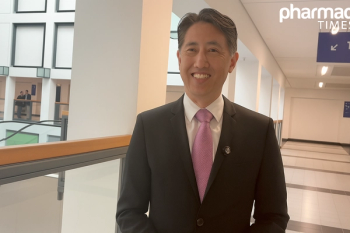We are seeing a 300% increase in reports of loneliness among leaders and health care professionals. According to a Harvard study on happiness, loneliness can be more harmful than smoking 15 cigarettes a day.1 Evidence shows that individuals who are experiencing social isolation and loneliness are at increased risk for premature death, and social isolation and loneliness are associated with a 29% increased risk of heart disease and a 32% risk of stroke.2
A 2021 online survey found that 36% of all Americans—which includes 61% of young adults and 51% of mothers with young children—feel serious loneliness.3 Additionally, the CDC found 63% of young adults also suffer significant symptoms of anxiety or depression.4 This means that we are having a generation of younger people deprived of deep connections who often do not have the skills to seek meaningful relationships.4
The late neuroscientists and prominent scholar of loneliness John Cacioppo, along with his spouse, Stephanie Cacioppo, published a letter in the Lancet in 2018 stating the following:
“Imagine a condition that makes a person irritable, depressed, and self-centered, and is associated with a 26% increase in the risk of premature mortality. Imagine too that in industrialized countries around a third of people are affected by this condition, with 1 person in 12 affected severely, and that these proportions are increasing. Income, education, sex, and ethnicity are not protective, and the condition is contagious. The effects of the conditions are not attributable to some peculiarity of the character of the subset of individuals, they are a result of the conditions affecting ordinarily people. Such a condition exists—loneliness.”5
We now know without doubt that chronic loneliness is increasing the risk of illness and early death. Loneliness has also proven to increase mortality from cancer as well as other diseases. According to US Surgeon General Vivek Murphy, MD, MBA, “Given the significant health consequences of loneliness and isolation, we must prioritize building social connection the same way we have prioritized other critical public health issues such as tobacco, obesity and substance use disorders.”6
The strain of chronic loneliness can lead to consistently high levels of cortisol and other stress hormones in the body, which can have detrimental effects on physical health.6
The United Kingdom has appointed a minister for loneliness to address the sad reality of modern life. This decision came quickly after a report from the British commission found that nearly 9 million people in the country either often, or always, feel loneliness—a condition that can have harmful consequence on the wellbeing of the country.7
Why Are We So Lonely?
In Lost Connections: Uncovering the Real Cause of Depression—and the Unexpected Solutions, author Johann Hari points out that loneliness is not merely about social isolation from other individuals in our circle. To Hari, loneliness flows from multiple venues: a disconnection from meaningful work, from a nurturing caretaker, from status and respect, from nature, and from a secure world. Disconnection from these vital sources of meaningful connections cannot be overlooked without deep consideration of the economy that manages workers like, “…cogs, automates dignified work, forces all able-bodied adults into the workforce, deprecates any work not done on a laptop, allows for insecure gig work and easy summary firings, and treats all values as ultimately subordinate to the financial bottom line.”8
Famous traumatologist Bessel van der Kulk, MD, validates Hari by saying that “Our culture teaches us to focus on our personal uniqueness, but at a deeper level we barely exist as individual organisms.”9
The creep of ever-increasing screen time and technology in our lives—and the mental toll it takes on our brains—makes it much more difficult to recharge ourselves and connect to our loved ones as well as our surrounding. The average smartphone check among Americans ranges anywhere from every 6 to 7 minutes, which rounds to about 150 times a day. As social creatures, our brains are naturally wired to connect, so it is not easy to turn away from these devices. But we all know that connection to devices is not as fulfilling as connecting to other humans. Worse, there is evidence that our addiction to screen time can actually require our brains to make us less adept at real human connections.10
The disappearance of small mom-and-pop shops in favor of megastore investments that offer more variety of products at a lower cost has made consumers happy. But at what cost? Locally owned businesses cannot compete with the marketing behemoth and are forced to close. As a result, neighborhoods are stripped of the familiar butcher, baker, coffee shop, and, of course, the local independent pharmacy. Locals no longer walk to their local establishment to meet and greet members of their community and pick up the items from locally owned stores they know. Instead, these individuals now drive in their cars to windowless chain stores miles away from what they used to call a community. And with the advances in technology, some don’t even leave home anymore. Why bother when you can order online?
Key Statistics
- Loneliness can be more harmful than smoking 15 cigarettes per day.1
- Individuals experiencing social isolation and loneliness are at increased risk for premature death, and social isolation and loneliness are associated with a 29% increased risk of heart disease and a 32% risk of stroke.2
- 36% of Americans—including 61% of young adults and 51% of mothers with young children—feel serious loneliness.3
Look for the Invisible Epidemic
Many workers don’t advertise their level of loneliness, nor do they know the impact of loneliness on their well-being. Some are not even aware they are lonely. Many employees complain about lack of motivation after only 6 months on the job, only to realize that it is the lack of deep, meaningful relationships at work that is making them unmotivated. Many hide their loneliness and their yearning for deep meaningful connections simply because they believe that personal matters should not be shared at work. Many fail to understand how essential high-quality relationships are for combatting workplace loneliness and depression in the long run.
Lack of psychological safety is one of the determining factors of loneliness at work. Employees are unlikely to speak up and be their natural best unless they receive strong signals from leaders and teammates that they’ll receive positive reinforcement for doing so. They’re also unlikely to reach out to colleagues to connect interpersonally without a similar safety net.
Going beyond superficial workplace relationships can be risky because meaningful connections—any connections, really—involve authenticity and some level of vulnerability. Time and again, many employees are afraid to spend company time on anything other than work for fear of being judged by their superiors. These cultural norms and prohibitions demonstrate how critical psychological safety is to ensuring vulnerability towards bonding with team members at the workplace. Authenticity and vulnerability should not only be encouraged but rewarded.
Many companies have attempted to hold workshops that involve teamwork activities. Although these exercises can help kickstart connections, they will not solve loneliness in the long term. With the change in return-to-work policies and some companies adopting a hybrid model, it is essential to revisit roles and processes to ensure a deeper intra-team relationship.
Collaboration is Key
According to Mellisa Madeson, PhD, key aspects of teamwork to consider when designing for relationship building are collaboration and social support. Working in parallel is unlikely to create opportunities for true connection compared with more integrated forms of collaboration. Instead, leaders should design a highly interactive setting that requires regular exchange of information as well thought partnership.11
Here are 3 tips that have worked for me to ensure harmonious collaboration in the workplace:
- Communicate meeting agendas ahead of time. This will allow members of the team to plan their ideas and responses ahead of time.
- Ensure that everyone is not only heard but seen. If you are the meeting facilitator, the onus is on you to ensure the introverts are given a chance to express their views and needs, as they are less likely to speak up.
- Have an incentive system in place for whoever makes the first move to collaborate and respond supportively to other’s outreach.
Without a new approach to facilitating relationships at work, employee isolation and disconnection will continue to grow, regardless of whether people are back in the office. Long before the pandemic forced physical separation of employees, workplace loneliness was growing. The post-pandemic transition provides the perfect opportunity to put the structures and rewards in place to facilitate a more connected workforce.
Confronting Loneliness at a Personal Level
At a personal level, we can take the following self-care approaches to assist with loneliness.
- Keep a Gratitude Journal:Practicing gratitude has time and again proven to have tangible benefits. It can be as simple as keeping a list of the things in your life that you are grateful for, such as your health, your career, your relationships, and the roof over your head. Or it can be a journal that captures the positive events of the day or the challenges you overcame—and why those events make you happy. When I practice gratitude, I find that I am not only grateful for all those blessings in my life, but I am also equally grateful for all the things that haven’t yet happened. Gratitude has also made me reflect on the adversities I was exposed to and the wisdom that came out of the hardships. Overcoming adversity has taught me resilience, humility, and the empathy necessary to understand the suffering of others.
- Find a Trusted Network: Find a supportive network free of shame and judgment, with individuals who have endured similar challenges, so you can mirror and seek guidance from them when needed. This supportive network should accept you, welcome your flaws, and often remind you that they, too, have been there and know how you feel.
- Practice Self-Compassion:At the heart of self-compassion is self-ease. It means to accept yourself completely, including flaws, mistakes, and unresolved childhood issues. It means to remind yourselves that it is okay to fall as long as you are able to pick yourself up and try again. If you journal the inner voices that tell you how you “should” appear, it can be jaw dropping to read them and learn how hard you have been on yourself. Courageously and radically accepting the entirety of yourself is critical in reconnecting to your authentic self.
- Connect With Yourself Through Mindfulness: One of the best ways to connect to your true self is through mindfulness. Mindfulness is to find joy in the small things such as drinking a warm cup of tea or coffee, listening to music, taking a hot bath, listening to an interesting podcast, observing nature, watering your plants, or spending quality time with family or friends. To be mindful, you must learn to temper the hyperactive amygdala and prevent it from controlling your mental state. This can be achieved through emotional resilience. This resilience is about adopting healthy approaches for coping with stress without becoming emotionally overwhelmed.
References
- Sweet J. The Loneliness Pandemic. Harvard Magazine. January-February 2021. Accessed November 30, 2023. https://www.harvardmagazine.com/2020/12/feature-the-loneliness-pandemic
- CDC. Loneliness and Social Isolation Linked to Serious Health Conditions. Reviewed April 29, 2021. Accessed November 30, 2023. https://www.cdc.gov/aging/publications/features/lonely-older-adults.html
- Loneliness in America: How the Pandemic Has Deepened an Epidemic of Loneliness and What We Can Do About It. Harvard Graduate School of Education. February 2021. Accessed November 30, 2023. https://mcc.gse.harvard.edu/reports/loneliness-in-america
- Berg S. What doctors wish patients knew about loneliness and health. American Medical Association. July 14, 2023. Accessed November 30, 2023. https://www.ama-assn.org/delivering-care/public-health/what-doctors-wish-patients-knew-about-loneliness-and-health
- Cacioppo JT, Cacioppo S. The growing problem of loneliness. The Lancet. 2018;391(10119):426. doi:10.1016/S0140-6736(18)30142-9
- New Surgeon General Advisory Raises Alarm about the Devastating Impact of the Epidemic of Loneliness and Isolation in the United States. News release. US Department of Health and Human Services. May 3, 2023. Accessed November 30, 2023. https://www.hhs.gov/about/news/2023/05/03/new-surgeon-general-advisory-raises-alarm-about-devastating-impact-epidemic-loneliness-isolation-united-states.html
- Smith J. Loneliness on its way to becoming Britain’s most lethal condition. The Independent. April 30, 2018. Accessed November 30, 2023. https://www.independent.co.uk/life-style/health-and-families/loneliness-lethal-condition-therapy-psychology-cox-commission-ons-health-a8311781.html
- Hari, Johann. Lost Connection: Uncovering the Real Causes of Depression – and the Unexpected Solutions. Bloomsbury Publishing Ltd, 2015.
- Van der Kolk, Bessel. The Body Keeps the Score: Brain, Mind, and Body in the healing of Trauma. Viking, 2014.
- Huffington, Arianna. Thrive: The Third Metric to Redefining Success and Creating a Life of Well-being, Wisdom, and Wonder. Harmony, 2015.
- Madeson M. How to Overcome Loneliness, According to Psychology. PositivePsychology.com. March 28, 2023. Accessed November 30, 2023. https://positivepsychology.com/loneliness-psychology/


















































































































































































































